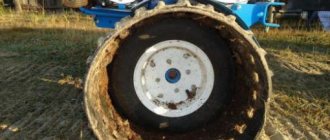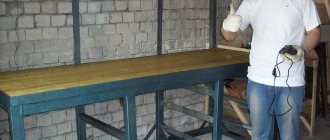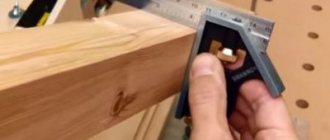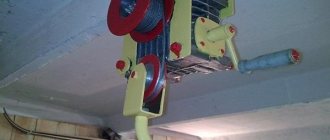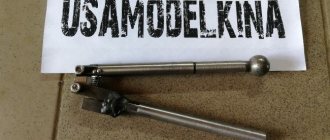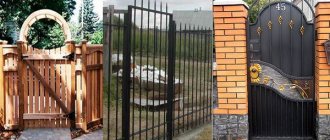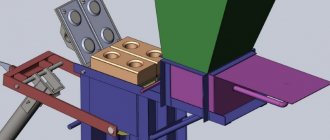Types of lifts
Before installing a car gearbox lift on a pit in the garage, we study its main varieties in more detail. This will help you figure out what a pit lift can be like.
By drive type
Jacks for lifting cars differ in the type of drive that is installed in them. There are two main models in this classification:
- hydraulic jack;
- devices with manual mechanical drives.
Experts advise using hydraulic models, as they are more efficient. However, it is not easy to make such a device yourself, and that is why many people make manual car lifts.
By type of lifts
Another distinctive feature of car jacks is the type of lift used in them:
- Screw. To install such equipment, use two durable racks in which special screws are installed. They are responsible for raising and lowering the vehicle. The operation of the installed screws is controlled by an electric motor.
- Mini. In the manufacture of such models, hydraulic or mechanical drives are used. A special feature of the equipment is its small size. Therefore, mini-lifts are not used to lift freight vehicles.
Electromechanical Engineering
Some models use different electromechanical technology. Based on this, car lifts are produced:
- Single post. Experienced motorists advise using such models in small garages, as they are compact. They consist of an electric motor, a movable carriage, and a vertical support.
- Scissor. Scissor car lifts can be mobile or stationary. They are equipped with a strong frame for attaching hinges and a compressor device.
By number of plungers
Based on the number of plungers, multi-plunger, double-plunger and single-plunger models are distinguished. In models with several plungers, a special traverse is installed, which is responsible for the efficiency of the equipment.
How to choose
What should you pay attention to when choosing a product? Of no small importance is how much it costs. However, this is not the only, and by no means the main selection criterion. Any product has technical characteristics, both significant and not so significant. The deciding factors when choosing are:
- power supply indicators for both the pumping station and the drive;
- maximum load capacity of the installation;
- refers to the mobile or stationary type;
- does the package include additional equipment that significantly expands the existing functionality;
- Dimensions in working and non-working condition.
It is worth keeping in mind that for a car service center with small premises it is better to buy a scissor lift, the installation of which is carried out in the recesses of the floor, which significantly reduces the occupied free space in the box.
According to buyers, non-essential qualities include:
- additional equipment with plumbing tools;
- what color are the lamps and lift stands;
- what does the transport packaging look like?
- whether the product tops the rating of the best models of the current year;
- How popular is the product brand?
All these indicators can significantly affect the price of the product, but do not improve its functionality and consumer properties.
Which company should I buy products from and where can I buy them? There is no clear answer to these questions. It all depends on the preferences of the potential buyer and his financial condition. There are several options to become the owner of this type of product:
- visit a specialized store and select the model you are interested in;
- order online in an online store, saving some money;
- make a lift with your own hands.
Let's look at the last option in more detail. The design is not particularly complicated, so if you have a little skill, the necessary equipment and tools, free time and desire, you can make it yourself. Let's take a screw car lift as an example and look at step-by-step instructions for making it yourself.
First, let's define the main characteristics of such devices. Their carrying capacity varies from 1.5 to 14 tons. The unit is equipped with one, two, four or six racks. Let's focus on the two-post version. Its main structural elements are:
- racks - 2 pieces;
- crossbar;
- screws;
- nuts;
- electric motor;
- grabs;
- bearings;
- anchors;
- chain transmission.
Required materials for production:
- hydraulic rods;
- compressor;
- hydraulic cylinders – 2 pieces.
As for the electric motor with gearbox and shaft, such parts can be purchased at an exchange point, where used elements are returned and new ones are obtained at an additional cost. Decide on the load diagram and make a drawing. It must be accurate and verified. Make the structure in full accordance with the drawing. Make sure it is reliable and safe. Equip it with a lead screw to move the angle with grabbers. Mount the motor and gearbox. How to install the unit? Secure the finished equipment to the floor with anchor bolts. Before you start using it, make sure it is strong and reliable. If you have any difficulties, seek advice from craftsmen who have already made such products.
Choosing the most suitable design
Before manufacturing a car lift, the most suitable design is selected.
For passenger cars
Often single-column models are chosen for working with passenger cars. The advantages of such car lifts include:
- ease of operation;
- compactness, thanks to which the equipment does not take up much space in the garage;
- a modern lubrication system that does not require constant maintenance;
- reliable protection aimed at preventing the car from tipping over during repairs.
Scissor-type equipment is also used to repair passenger cars. With its help, a car mechanic can quickly raise or lower the vehicle to the desired height.
For truck
The main feature of any truck is its size and weight. Due to the non-standard dimensions and large weight, not all lifts can lift such cars.
To repair such vehicles, they use cargo devices with a high carrying capacity. They can be movable, stationary and platform. They are used only in service stations that specialize in repairing tractors or trucks.
Scissor car lifts
Mechanisms of this type are used for vehicle maintenance and adjustments. The advantage is the ability to install flush with the floor surface . Thanks to their special design, they take on a compact form when folded.
Many models lift vehicles using a hydraulic drive. The latter provides them with such advantages as complete silence during operation, smooth running, and high durability. There are two types of lifts of this type - stationary and mobile . The latter are used for operational maintenance outside the workshop. These lifts have a lifting capacity of 5 tons . The main disadvantage is the high cost.
How to make a reliable car lift with your own hands
It is not easy to make a car lift from a jack yourself, and therefore you need to read the instructions in advance.
Calculation of dimensions and creation of a drawing
First you need to decide on the size of the equipment for working with cars.
The choice of car lift dimensions depends on the size of the garage in which it will be used. The average height of the device is three and a half meters, and the width is three meters. Equipment with such dimensions is capable of lifting a vehicle whose weight reaches 3-4 tons.
Required Components and Tools
Having decided on the dimensions of the car lift, you can begin to prepare the necessary tools and materials. To work you will need:
- welding machine for joining iron components;
- drill;
- drill;
- tape measure for measuring the dimensions of device parts.
The materials from which the device is made include:
- bedding corners eight centimeters wide;
- iron plates, the thickness of which should be 1-2 centimeters;
- worm gearbox.
Assembly instructions
At the initial stage of creating a lift, steel corners are installed in the walls of the garage pit. After this, a metal plate is installed on their shelves and attached to the surface. The gearbox is installed on top, after which a key is fixed on the drive shaft.
After installing the gearbox, holes are made on the surface of the plate through which the chain will pass. When the chain is installed, a sprocket is put on the shaft. To install the second chain, the same holes are made on the opposite side of the plate.
The resulting structure can withstand a load of 2-3 tons.
Making a tipper
To create a lift-tilter you need to know what parts it consists of:
- front pillar;
- shoe;
- area;
- top, bottom and rear beams;
- connection elements.
Manufacturing diagram of the lift.
Necessary materials:
- steel sheets 4 mm thick;
- corners;
- bushings;
- fasteners;
- welding tool.
First comes the metal shoe. A metal rod should be welded to secure the jack. The shoe needs to move on the post, so you need to stick to the inside width. Four corners are needed to create the rear beam.
We create squares from the corners, and insert a 26*21 mm metal square rod 35-36 cm long into one of them. Next, sheet metal 3-4 mm thick is used to create a platform. The coverage of the site will be approximately 350*150 mm, and the sides are made in a curved shape.
Difficulties in making a lift
When making a homemade car lift, difficulties may arise that you need to familiarize yourself with. Often problems arise with the manufacture of parts that are difficult to make with your own hands. Therefore, some components for the lift will have to be purchased. Such parts include lead screws or an electric motor, which is installed in some models.
Difficulties also arise at the stage of calculating the dimensions of lifting equipment. It is quite difficult to independently determine the optimal dimensions for such a device.
Four post lifts
Lifting equipment of this type is a structure of four supports on which a working platform or two separate ladders are installed. Such devices, as a rule, have large dimensions and a high load capacity (up to 45 tons), which determines their main area of application - maintenance of trucks, buses and special equipment. Four-post lifts are well suited for use at control stations and for wheel alignment adjustments. At the same time, many standard procedures cannot be performed using such equipment, since vehicles are lifted not by the thresholds, as is the case with other types of lifts, but by the wheels.
Car lifts with four supports can be equipped with both hydraulic and electromechanical drives with a power of up to 3 kilowatts. Special systems synchronize the operation of lifting mechanisms, which prevents frame skewing, and the presence of safety devices eliminates the possibility of the platform falling in case of breakdowns. The time it takes to raise a car on such equipment usually ranges from 45 to 50 seconds, while lowering it back takes no more than 25 seconds.
Advantages:
- High load capacity, allowing you to work with trucks and special equipment
- Convenient control system
- Availability of an emergency platform lowering system in case of power outage
Flaws:
- Large dimensions
- High price
- Need for adjustment during operation
Choosing a design
So, you decided to rely on your skillful hands and make a homemade garage lift, rather than purchasing it at a specialty equipment store. This is an understandable desire: the cost of such equipment may not be much less than the cost of your car, and it will rarely be used (only if you are not going to open a service station in the garage).
The idea has arisen, the desire too, now it’s time to choose the design of the device being created . To do this, you should pay attention to factory-made lifts presented on the special equipment market, “peek” at their design and imagine whether you can do something similar.
Most likely, the first thing you will see is a two-post lift , which can be found in almost every auto repair shop. This type of device can be equipped with an electromechanical or electrohydraulic drive.
In the first case, inside each rack there is a threaded shaft rotated by an electric motor with a gearbox. There is a bearing nut on the threaded shaft, which moves along it and accordingly raises and lowers the “legs” on which the car rests.
In a two-post electro-hydraulic lift, the shaft is replaced by a hydraulic drive, the pressure in which is created by an electric motor.
There are
other options of a similar design , but with one, three or four racks.
Another type of lift is a scissor , where a platform with a system of levers (called “scissors”) is raised and lowered using hydraulic actuators driven by electric motors.
When creating such designs, you may encounter many questions and problems that need to be solved. First of all, this is work safety - no one wants to get seriously injured or disfigured due to a broken lift on one unlucky day.
Therefore, you should choose the materials and design of the device so that it can withstand the weight of the car, and with a significant margin .
It is also worth taking care of the manufacture of locking mechanisms that allow you to hold the car in place in emergency situations with the lift.
And the main problem faced by those who want to make a two-post or scissor car lift with their own hands is the complexity of manufacturing and the high cost of parts. It is almost impossible to create a long threaded shaft at home; selecting cylinders and hydraulic hoses is a complex matter, and they are not cheap.
But there is a simpler version of the car lift, adapted for production in garage conditions, that turns the car on its side at an angle of 45°-60° and is called a tipper . Let's take a closer look at it and see what and how it can be made from.
Assembling the lifting device
A homemade lift for a car service workshop is assembled quickly and easily. The workflow consists of 8 steps:
- bent steel corners must be secured to opposite flat walls of the room so that the hood of the car is under them;
- a steel plate must be installed on the corners and secured with M8 bolts;
- install the gearbox on the plate;
- secure the key to the drive shaft gearbox;
- drill a hole in the plate and pass the chain, close it in the shape of a ring;
- secure a smaller key to the output shaft of the gearbox;
- drill two holes in the plate, pass the second chain;
- Fix the first end of the drive chain on a small key, and equip the second with a hook.
Using professional drawings, a DIY scissor lift can be made very easily and quickly. A homemade garage lift has a lever transmission system in the form of scissors. Operating torques are carried out by a hydraulic drive powered by an electric motor.
As the main working unit, the car lift-tipper contains a rack, hydraulic or worm jack. The heel of the device with large stiffening ribs can tilt a car weighing 2.5 tons by 45°. For strength, the platform of the device with movable mechanisms is equipped with stiffening ribs with a metal thickness of up to 7 mm, corners and a square thick-walled profile. The support bent corner, the lower platform and the support beam are also made of metal.
You can make a mechanical tipper from a set of necessary components:
- thick-walled square pipe 0.5×0.5 cm or corner with shelf;
- two fingers;
- four bushings;
- metal fragments for scarves.
The parts are fastened together by welding, the brackets with hinges are connected to the platform, after which the lift is ready for use.
Plunger car lifts
Plunger car lifts have a simple but effective design. They consist of a lifting platform or ladders attached to the ends of hydraulic cylinder plungers, hence the name of this equipment. The number of such plungers can vary from one to four.
Plunger car lifts are offered in two versions: floor-mounted and recessed into the floor (more common). In the latter case, the lowered car lift takes up almost no space in the room, which is one of the advantages of such devices.
Plunger type lifts are suitable for general service and body work and are also suitable for use in the wash area. When raised, they do not interfere with the opening of doors and access to the main working areas of the car, including the fenders, engine and front end. If necessary, several plunger car lifts can be combined into one system, which will allow servicing large and long vehicles. In addition, such lifts are easily configured to work with any type of ground clearance.
Advantages:
- Minimum requirement of plunger lifts for free space in the room
- Ease of access to all parts of the car, absence of cables and columns that interfere with the work of personnel
- High lifting speed with almost complete silence
- Reliability and long service life
- Low maintenance
Flaws:
- High price
- Difficulty of installation
equipment requirements
First of all, this equipment will need the ability to lift the machine to a height at which it is convenient to service it. You can simply lift it, or you can raise it to full human height. The second and, perhaps, the most important requirement for it is to ensure the complete safety of people and the integrity of the vehicle. We will not give sad examples, but, unfortunately, they exist.
In addition, you need to think about the drive and lifting mechanism system, think about control, adjustment and fastening to the garage floor. By the way, most factory-made products are tightly anchored to the floor and concreted. This is necessary to prevent tip-overs and reduce the risk of injury and property damage; however, there are also self-propelled hydraulic lifts.
Drive and lift
The drive of all lifts can be either hydromechanical or electromechanical. In the first case, an electric motor with a pump and a system of hydraulic cylinders are used to lift the platform or table. Its operating principle is quite simple and is clear from the diagrams and drawings provided. As a rule, a three-phase 380-volt electric motor is used to operate the lift hydraulic station, and the hydraulic fittings must be strictly adjusted according to the expected load.
Low-cost hydraulic power plants also operate from a 24-volt electric motor, but their load capacity is severely limited, and reliability, based on the country of manufacture, is incredibly low. That is why it will be much more rational and cheaper to assemble it yourself than to buy Chinese scrap metal, although the manufacturer differs from the manufacturer.
